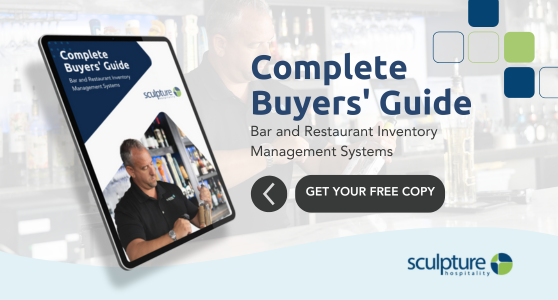Effective inventory management is the cornerstone of success for your restaurant. Strategic inventory management can reduce waste, increase your company’s profit margins and help deliver a superior customer experience.
A critical calculation in a successful inventory management process is the periodic automatic replacement (PAR) level.
This guide will delve into what a PAR sheet is, its benefits, and how to set one up for your restaurant - whether you opt for a modern inventory management software solution or a traditional manual spreadsheet.
What is an Inventory PAR Sheet
What is par level? A PAR sheet in the restaurant industry is a meticulously crafted document or digital record that indicates the ideal stock level for every item in your restaurant’s inventory.
Your PAR level, which stands for ‘periodic automatic replacement’, is a calculation that encapsulates the goal of this tool: to maintain optimal inventory levels. Your restaurant’s PAR sheet is used to guide ordering decisions, ensuring that you have enough supplies to meet demand without overstocking - which can lead to higher levels of waste and wasted money.
Simply put, PAR level not only helps you meet customer demand, it does so while ensuring that your profit margins are maximized.
The Benefits of an Inventory PAR Sheet
- Efficient Inventory Management: A well-implemented PAR sheet simplifies the process of tracking and managing inventory. It provides a clear view of what needs to be reordered and when reducing the likelihood of over-ordering or running out of essential items.
- Cost Savings: By maintaining optimal inventory levels, restaurants can avoid the costly pitfalls of overstocking and understocking. This balance helps in reducing waste and better financial management.
- Time Management: With a PAR sheet, the time spent on inventory management is significantly reduced. Staff can quickly refer to the sheet for reordering, which streamlines the ordering process.
- Data-Driven Decisions: A PAR sheet allows for more informed decision-making by providing concrete data on inventory usage patterns, helping to forecast future needs more accurately.
Setting up Your Restaurant Inventory PAR Sheet
The Easy Way: Inventory Management Software
The most efficient and least difficult way to find PAR levels for your inventory items is by using a modern inventory management system. Inventory software offers a streamlined and more efficient way to handle your PAR sheets - often automating this entire process for you.
Inventory management can track inventory levels, automatically update PAR levels based on consumption patterns, and even integrate with suppliers for easier ordering. Investing in inventory software can save time, reduce errors, and provide valuable insights that increase your restaurant’s profit margins.
You can learn how to find the right restaurant inventory system for you with our free Buyers’ Guide. Simply click the below image to get your free copy.
The Difficult Way: Manual Spreadsheets
If you prefer, or are limited to, manual methods setting up a PAR sheet can be done using spreadsheet software like Microsoft Excel. This process involves manually entering inventory data, calculating PAR levels, and regularly updating the sheet.
While this method is more labour-intensive and prone to human error, it can be effective for smaller operations or those with limited budgets. It requires diligent upkeep and a good understanding of spreadsheet management.
Here are four key steps when setting up your restaurant inventory PAR sheet:
- Identify Your Inventory: Begin by listing all the items in your inventory, including perishable and non-perishable food items, beverages, and other supplies.
- Determine PAR Levels: For each item, establish the ideal stock level (PAR level). This involves analyzing past consumption patterns, and considering factors like seasonality and special events.
- Update Regularly: The restaurant industry is dynamic, and so should be your PAR sheet. Regularly review and adjust the PAR levels as needed to reflect changes in your restaurant’s demand and supply chain.
- Train Your Staff: Ensure that all relevant staff members understand how to use the PAR sheet. This includes knowing how to read it, update it, and how it ties into the ordering process.
Are you ready to improve your inventory management processes and set up your restaurant inventory PAR sheet? Get in touch with Sculpture Hospitality today. Our team of local inventory management experts would love to help.











